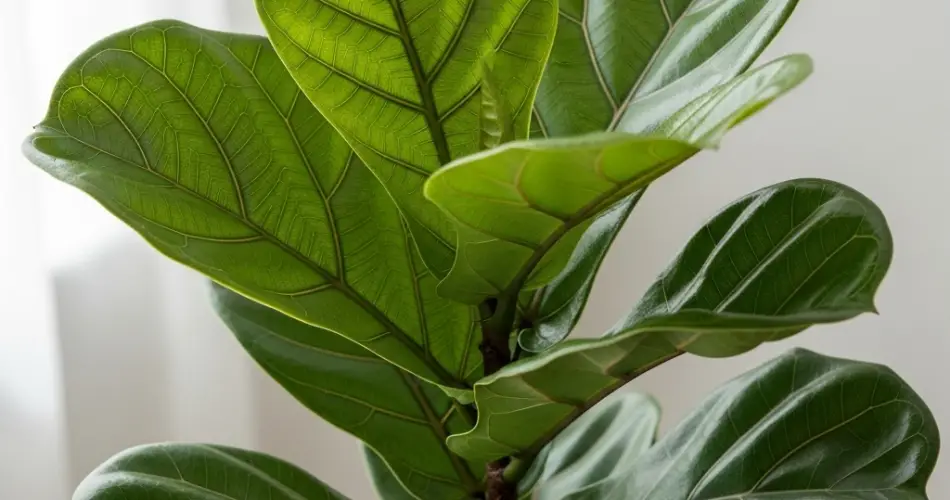The fiddle leaf fig (Ficus lyrata) has become one of the most popular houseplants in recent years, admired for its large, glossy leaves and elegant shape. Growing this tropical beauty from seed might seem daunting, especially for beginners, but with the right approach, you can nurture fiddle leaf figs from seed to a stunning specimen faster than you might expect.
This guide covers every step you need—from seed selection and germination to optimal care—to help you develop a healthy, vigorous fiddle leaf fig in record time.
Why Grow Fiddle Leaf Fig from Seed?
Growing fiddle leaf figs from seed is rewarding and cost-effective. Unlike buying mature plants, starting from seed allows you to watch the entire growth process and develop a deeper connection with your plant. Seeds can also provide greater genetic diversity, potentially resulting in a plant uniquely suited to your home environment.
Selecting Quality Seeds
Start with high-quality fiddle leaf fig seeds from a reliable supplier. Fresh seeds have a higher germination rate, so check the harvest or packaging date. Avoid seeds that appear shriveled, damaged, or overly dry.
Preparing Seeds for Germination
Fiddle leaf fig seeds benefit from proper preparation before planting:
-
Soak the seeds in warm water for 12-24 hours to soften the seed coat and improve germination chances.
-
Use a clean container and change the water if it becomes cloudy to prevent mold.
Creating the Ideal Germination Environment
Fiddle leaf fig seeds require warmth, moisture, and darkness to sprout successfully.
-
Soil: Use a well-draining seed-starting mix, rich in organic matter but light enough to allow root growth.
-
Containers: Use small pots or seed trays with drainage holes.
-
Planting depth: Sow seeds about ¼ inch deep.
-
Temperature: Maintain soil temperatures between 75°F and 85°F (24°C to 29°C) to encourage germination.
-
Moisture: Keep the soil consistently moist but not waterlogged. Use a spray bottle to mist the surface daily.
-
Humidity: Cover the container with a clear plastic dome or plastic wrap to retain humidity.
Germination can take 2-4 weeks, so be patient and keep conditions stable.
Transplanting Seedlings
Once seedlings develop their first true leaves and grow at least 2-3 inches tall, it’s time to transplant them into larger pots.
-
Use a high-quality potting mix suitable for tropical plants, with good drainage.
-
Choose containers that are 4-6 inches in diameter initially to encourage healthy root development.
-
Handle seedlings gently to avoid damaging delicate roots.
-
Water lightly after transplanting to settle the soil.
Providing Optimal Growing Conditions
For rapid growth and stunning foliage, fiddle leaf figs need the right environment:
-
Light: Place your plant in bright, indirect sunlight. They thrive near east- or west-facing windows. Avoid harsh direct sunlight, which can scorch leaves.
-
Temperature: Keep temperatures between 65°F and 80°F (18°C to 27°C). Avoid cold drafts and sudden temperature changes.
-
Humidity: Fiddle leaf figs prefer moderate to high humidity. Use a humidifier or place the pot on a tray with water and pebbles to increase humidity.
-
Watering: Water when the top inch of soil feels dry. Thoroughly water until excess drains from the pot, but don’t let the plant sit in standing water.
-
Fertilizing: Feed every 4-6 weeks during the growing season (spring and summer) with a balanced, water-soluble fertilizer diluted to half strength.
Pruning and Training for a Stunning Shape
Regular pruning encourages bushier growth and prevents legginess.
-
Pinch off the growing tips once your plant reaches 12-18 inches tall to encourage branching.
-
Remove any dead or yellow leaves promptly.
-
Consider staking young plants for support and shaping.
Dealing with Common Issues
-
Leaf drop: Often caused by overwatering, underwatering, or sudden environmental changes.
-
Brown spots or edges: Usually a sign of inconsistent watering or low humidity.
-
Pests: Watch for spider mites, mealybugs, and scale insects. Treat infestations early with insecticidal soap or neem oil.
Accelerating Growth Tips
-
Maintain consistent watering and humidity.
-
Rotate the plant weekly for even light exposure.
-
Use a balanced fertilizer regularly.
-
Avoid moving the plant too frequently to reduce stress.
-
Repot every 1-2 years into slightly larger containers to prevent root binding.
Summary: Growing a Stunning Fiddle Leaf Fig Fast
Growing fiddle leaf figs from seed requires patience, but by following these key steps, you can nurture a healthy, beautiful plant in less time than you might expect:
-
Start with fresh seeds and soak them before planting.
-
Provide warm, humid conditions for germination.
-
Transplant seedlings carefully into well-draining soil.
-
Give bright, indirect light, moderate humidity, and regular watering.
-
Prune and feed consistently to promote lush foliage.
-
Monitor for pests and environmental stresses.
With attention and care, your fiddle leaf fig will reward you with its striking presence and lush leaves, becoming a centerpiece in your home.



